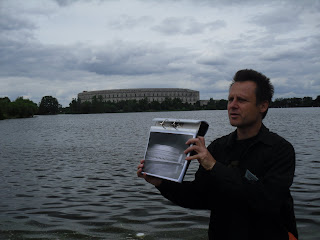After bidding our fair wells to Munich, we boarded the bus and headed to Vitra Campus, Disney World for Architects. Along the way we made a slight pit stop in Austria to see the Kunsthaus by 2009's Pritzker Winner Peter Zumthor. So needless to say that some of the students and a certain teacher wearing a certain color were quite giddy to see the project.
Once everyone composed themselves and boarded the bus again, we headed again towards Vitra but not before stopping in Switzerland at the most expensive truckstop/mall ever. But that was but a minor speed bump. What is really important is VITRA. Composed of a campus of buildings 6 of which by Pritzker Winners, Vitra is truly an architectural candy store. One of the more famous buildings on the campus is Frank Gehry's Vitra Museum (above) which was the first "fetishistic" building on the campus.
Next door is Tadao Ando's Conference Building (above) which was built as a reaction to Gehry's Museum. Rather than trying to compete with Gehry, Ando decided to go with a minimal approach incorporating the building into the field of cherry trees. Just as an interesting side note about the architect, Ando actually began his career as a professional boxer. Talk about an interesting career path.
Next we have a small Buckminster Fuller Dome (above). I was frankly unable to divulge why they have a Buck Dome other than to simply say they have one... But its their money not mine so they can do what they want.
Next door to the Buck Dome was a sweet little retro Petrol Station (above) by Jean Prouve which was actually completely prefabricated and moved to the site.
Other notables on the campus include a bridge/overhang by Alvaro Siza (Pritzker,1992), a factory building by SANAA (Pritzker, 2010), and a Fire Station (above) by Zaha Hadid (Pritzker, 2004). You may remember the BMW Plant by Zaha from a few days ago and this stands as a stark contrast as this is from much earlier in her career.
And lastly for the campus was the reason I was excited to come, the newly completed VitraHaus (above) by Herzog & deMeuron (Pritzker, 2001). Some of you may be familiar with this firm as they were the one who designed the Bird's Nest for the 2008 Beijing Olympics. This building was really incredible with views to 3 countries (Germany, Switzerland and France) and tons of Vitra Furniture that I could never afford. A true paradise...
But thats enough architecture. Let me get to the reason most of you are probably reading. The Castle (above and below). Needless to say this thing was waaaaaay up there. If you hate heights then this was not the place for you. The castle was built for the former royal family of Germany and still remains in the family to this day. The Prince, however, would apparently rather stay in his loft in Berlin than here for some reason. I mean seriously if I had a castle I would never leave. But enough ranting. Until next post.
 The first complex we viewed was by far the most important. The Unite de Habitation (above) by Le Corbusier. The project is situated overlooking the 1936 Olympic Stadium and is still completely function today.
The first complex we viewed was by far the most important. The Unite de Habitation (above) by Le Corbusier. The project is situated overlooking the 1936 Olympic Stadium and is still completely function today.















































